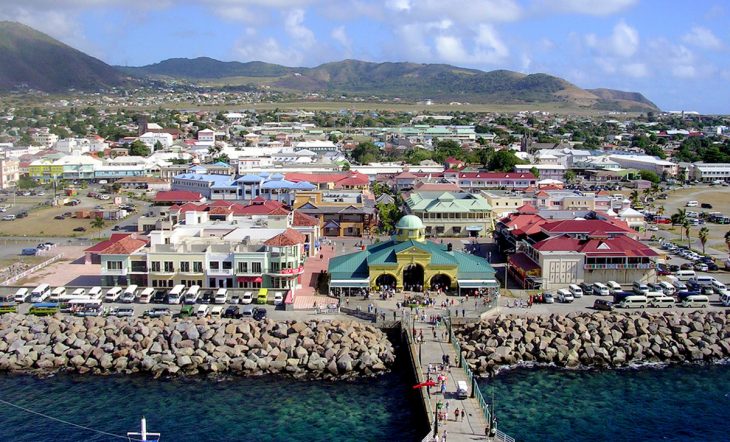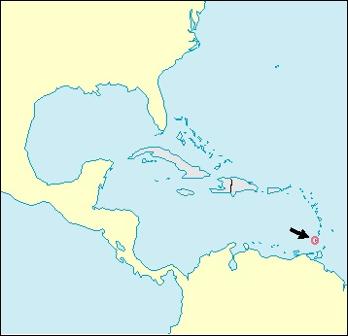What is the Capital of Grenada? Saint George’s

Capital City of Grenada: St. George’s
City Overview
St. George’s is the capital and largest city of Grenada, a beautiful island nation located in the Caribbean Sea. Situated on the southwest coast of the island, St. George’s is known for its picturesque harbor, vibrant history, and colonial architecture. The city is often considered one of the most scenic in the Caribbean, surrounded by lush hills and blue waters, with a harbor that is one of the most beautiful in the world.
St. George’s was founded in 1650 by the French and named after St. George, the patron saint of England. The city became the capital of Grenada in 1763 when it was ceded to the British under the Treaty of Paris. Over the centuries, St. George’s has developed into a bustling port and a center for government, commerce, and tourism. It is known for its historic buildings, such as forts and churches, as well as its local markets and friendly atmosphere.
Grenada’s economy is largely based on agriculture, tourism, and fishing, with the country being famous for its production of nutmeg, cocoa, and spices. St. George’s is the heart of these industries, with the majority of the country’s administrative and commercial activities taking place here.
Key Facts about St. George’s:
- Area: 26.2 square kilometers (10.1 square miles)
- Population: Approximately 35,000 (city population), about 112,000 for the entire island of Grenada
- Time Zone: Atlantic Standard Time (AST) (UTC -4)
- Highest Mountain: Mount Saint Catherine, which stands at 840 meters (2,756 feet) above sea level.
- Longest River: The Great River, which is the longest river in Grenada and runs for approximately 10 kilometers (6.2 miles).
St. George’s is renowned for its blend of colonial architecture, colorful Caribbean houses, and traditional culture. The city is also the center of many events and festivals that reflect Grenada’s unique cultural identity, such as Carnival and the Grenada Chocolate Festival. The city’s deep history is visible in its architecture, including landmarks like Fort George and the Cathedral of the Immaculate Conception.
Major Landmarks in St. George’s
- Fort George
Built in 1705, Fort George is one of St. George’s most historic landmarks. Overlooking the harbor, it provides a stunning panoramic view of the city and the Caribbean Sea. The fort was used for defense during both French and British rule and now houses a small museum with exhibits about Grenada’s colonial past. - Carenage
The Carenage is St. George’s picturesque harbor, which is often considered one of the most beautiful in the Caribbean. The harbor is lined with colorful buildings and is home to a bustling waterfront with boats, restaurants, and shops. Visitors can take boat tours or simply stroll along the water, enjoying the scenic views and lively atmosphere. - The Cathedral of the Immaculate Conception
This Roman Catholic cathedral is one of the most important religious buildings in Grenada. Built in the 19th century, the cathedral’s design reflects the country’s colonial past, with beautiful stained glass windows and grand interiors. It is located in the heart of St. George’s, close to the main square. - Grenada National Museum
Located in a colonial-era building on the Carenage, the Grenada National Museum offers a comprehensive look at the history of Grenada, from its indigenous peoples to the present day. It houses exhibits on the island’s natural history, slavery, independence, and the spice trade, as well as artifacts from Grenada’s colonial past. - Market Square
St. George’s bustling market is the best place to experience the local culture. Here, you’ll find fresh produce, spices, handmade goods, and a variety of souvenirs. The market square is also home to the famous Spice Market, where visitors can purchase Grenada’s famous nutmeg, cocoa, and other spices. - Fort Frederick
Located on a hilltop in the northern part of the city, Fort Frederick offers one of the best views of the island. Built in the 18th century by the French, the fort was later expanded by the British. Today, it stands as a historical monument and a peaceful spot to enjoy the view over St. George’s and its harbor.
Climate Overview
St. George’s experiences a tropical climate with two distinct seasons: the wet season (from June to November) and the dry season (from December to May). The temperatures are warm year-round, and the island can be quite humid, particularly during the rainy season. Grenada is situated outside the Caribbean hurricane belt, so it experiences fewer hurricanes than other parts of the region, although it can still be affected by storms.
| Month | Average Temperature (°C) | Average Precipitation (mm) | Avg Sunny Days |
|---|---|---|---|
| January | 25-29 | 55 | 10 |
| February | 25-29 | 38 | 10 |
| March | 25-30 | 32 | 11 |
| April | 26-30 | 45 | 11 |
| May | 26-30 | 106 | 8 |
| June | 26-30 | 112 | 6 |
| July | 26-30 | 115 | 6 |
| August | 26-30 | 122 | 5 |
| September | 26-30 | 137 | 5 |
| October | 26-30 | 135 | 5 |
| November | 25-29 | 92 | 8 |
| December | 25-29 | 68 | 9 |
Other Cities that Served as Capital in Grenada’s History
Grenada has had St. George’s as its only capital since its British colonial days, following the French period. However, throughout the island’s early history, different settlements played important roles before the capital was firmly established in St. George’s.
1. Fort Royal (before 1763)
Before St. George’s was officially designated as the capital, the French established a settlement at Fort Royal (now known as La Baie des Flamands). During the French colonial period, the island’s capital was based in this location due to its natural harbor. However, following British conquest in 1763, the capital was shifted to St. George’s.
2. St. George’s (1763-Present)
St. George’s has served as Grenada’s capital since the British took control of the island. The city was chosen due to its strategic harbor, which made it an ideal location for trade and defense. Over the years, St. George’s has expanded and developed into the country’s commercial, administrative, and cultural center.
Country Facts
Grenada is a small island nation in the Caribbean Sea, known for its spice production, stunning beaches, and tropical landscapes. It is often referred to as the “Island of Spice” due to its large-scale production of nutmeg, cocoa, and other spices.
- Population: Approximately 112,000 (2023 estimate)
- Area: 344 square kilometers (133 square miles)
- Largest City: St. George’s
- Currency: Eastern Caribbean Dollar (XCD)
- Official Language: English
- ISO Country Code: GD
- Timezone: Atlantic Standard Time (AST) (UTC -4)
Grenada is an independent country and a member of the Caribbean Community (CARICOM) and the Commonwealth of Nations. The island enjoys a relatively low population density and offers a high quality of life with a focus on tourism, agriculture, and services.














































